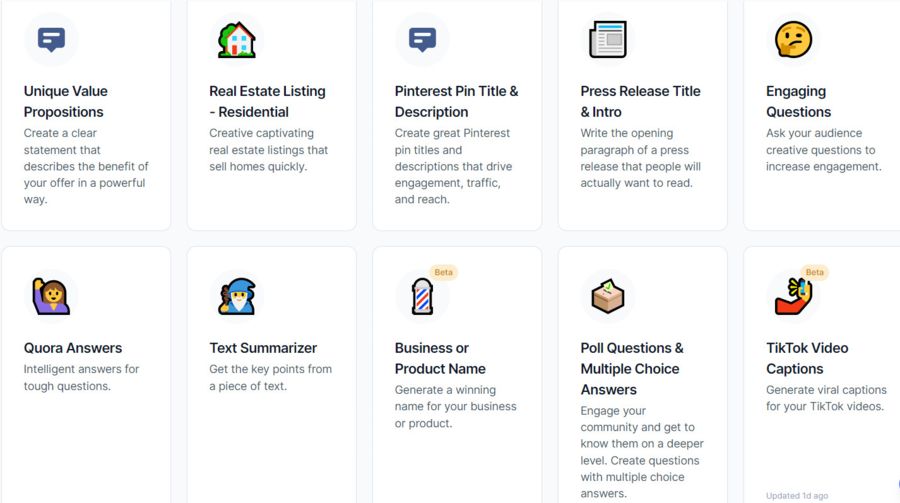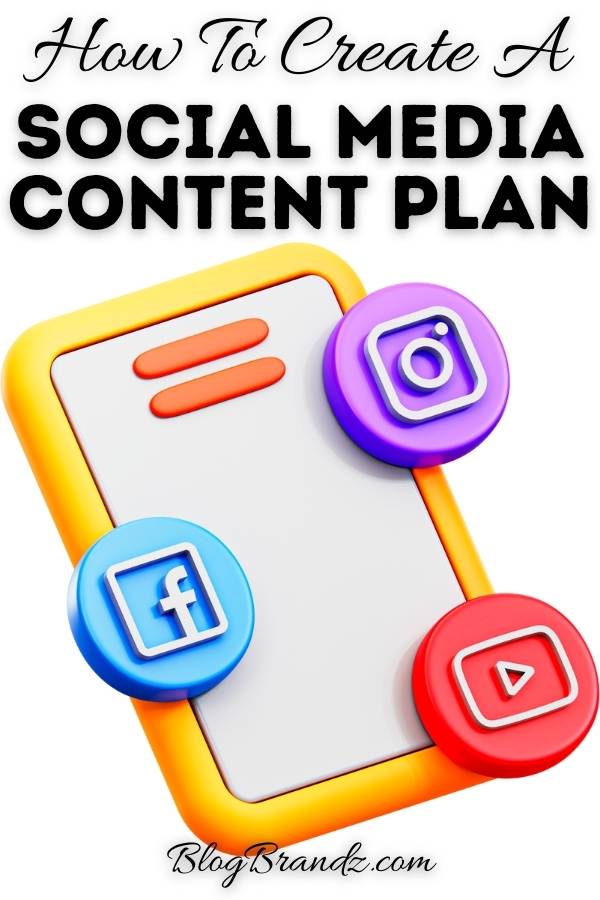
Learn how to get social media content ideas for engaging social media posts so you can boost your social media engagement and branding.
There’s no question that social media has completely revolutionized the way we communicate. In just a few short decades, platforms like Instagram, Twitter, LinkedIn, and Facebook have changed the way we interact with friends, family, and strangers alike.
Today, a significant percentage of communication globally takes place on social media, and businesses have realized that they can use social networks to communicate with potential clients and customers. In fact, according to Awario:
- 84% of C- and VP-level buyers use social media to make purchasing decisions.
- 78% of sales reps using social media as part of their lead generation process perform better than their peers.
- IBM increased its sales by 400% thanks to social selling.
However, the social media landscape is also fraught with challenges – particularly when it comes to creating content for social media posts.
Because the social media writing style is informal, it can be difficult for organizations to craft effective social media posts that are also appropriate for the medium.
Companies that don’t understand the art of social media writing aren’t reaping many benefits from it, while others are ruining their chance of building a good relationship with their audience online, because they don’t understand best practices for social media writing.
If you’re active on one or more social media platforms such as Twitter, Facebook, Instagram, LinkedIn, and Pinterest, you’ll have realized that there is a specific way to write social media posts and that some social media content marketing strategies are more successful than others.
Social media marketing is an effective way to establish a competitive edge in any industry. However, if you’re posting on social media for business, you must learn the art of writing effective social media engagement posts.
Contents
What is a social media post?
A social media post is a message or article you share on a social media platform, such as TikTok, Instagram, Facebook, Twitter, or LinkedIn. It can be in the form of text, photos, videos, or links to blog posts.
Social media posts are typically shared to build relationships with friends and followers, to inform or entertain people, and to promote businesses or other organizations and causes.
There are many different types of social media content, including text, photos, Pins, infographics, and videos. However, there are specific content formats that work best on different social media platforms.
For example:
- On Instagram and TikTok, short videos and reels are currently the formats that work best.
- On YouTube, both short video and long-form video content work to build followers and engagement.
- On Twitter, short quotes, statistics, images, or commentary that can be easily digested in under 280 characters, do well.
- On Facebook, photos, videos, and short video reels, that evoke an emotional reaction, do best.
- On LinkedIn, articles from industry publications, LinkedIn blog posts, and videos also do well.
- On Pinterest, Idea Pins, Video Pins, and vertical image Pins (with a 2:3 aspect ratio) work best.
So, it’s important to tailor your social media posts according to the platform and the audience you’re trying to reach.
How to generate social media content ideas
One of the biggest challenges for social media marketers is coming up with creative social media content ideas for small businesses.
Creating social media content is an integral part of any marketer’s toolkit. However, it can sometimes be tough to come up with engaging social content ideas that are both engaging and on-brand.
If you’re having trouble coming up with social media post ideas for business, these tips will help you generate engaging content for social media on the fly.
#1. Get to know your target audience
In order to create engaging social media posts, you must think about what your target audience would find interesting or valuable.
What kind of information would they be interested in? What sort of problem could you solve for them?
By understanding the needs of your target audience first, you’ll be more likely to create effective social media posts that they actually want to see and engage with.
Don’t forget that you can always ask your audience what they want to see from you directly, using surveys, social polls, and social media questions.
Once you have an idea of the sort of answers they are looking for, you’ll find it easier to ideate content for social media posts that will interest and engage them.
#2. Keep a swipe file of social content ideas
Keep a swipe file of social media content ideas on your phone, Google Drive, Google Sheets, Facebook Saved Posts, or Pinterest boards so that you can draw inspiration.
Whenever you see a new viral video on social media that makes a great social media post, save and screenshot it, or Pin it for future reference.
Your social media content swipe file can include any sort of creative social media posts, from examples of winning social media campaigns to an interesting article or video, to a motivational quote or a funny meme.
When you’re struggling to find ideas, use these writing prompts to jump-start your creativity. You can use all sorts of social media writing prompts, from questions (e.g., “What was your best childhood memory?”) to topics (e.g., “5 things you love about summer”).
#3. Mine your blog stats for inspiration
Another excellent source of social media post ideas is your website traffic data. You can dive into the traffic analytics of your website or blog to come up with ideas for engaging social media posts.
Your blog stats will tell you what content is already resonating with your audience. Use content audit tools to find out which blog posts are most popular, based on their page views, comments, and social shares.
SEMrush’s Organic Traffic Analysis tool combines Google Analytics, Search Console, and SEMrush data to conduct content analysis and give you the full picture of what your audience wants in just a couple of clicks.
Also, check the search terms that people are using to find your blog. If you notice certain keywords popping up again and again, it could be an indication that there’s a lot of interest in that topic.
If you have a blog post that’s been especially popular, you could share an excerpt from the post on social media and link back to the full article.
You can also repurpose a successful blog post into a video, infographic, or podcast and share it with your community. By resharing and repurposing content for social media, you can drive traffic back to your blog, while also providing value to your followers.
#4. Get into a creative mind space
When planning content for social media, get into a creative mind space by optimizing your work environment in a way that gets your creative juices flowing.
Once you’ve overcome writer’s block and are in a good headspace, start brainstorming ideas for your social media posts. What would your audience find interesting or valuable? What information or stories would add value to their day?
Collaborating with others is another great way to generate fresh ideas. Creative brainstorming sessions can be done in person or online, and they don’t have to be formal.
Sometimes, just getting together with a friend or colleague for coffee and a chat can do the trick.
#5. Spy on your competitors
If you’re struggling to come up with engaging social media post ideas, check out your competitors’ social media pages to find ideas and inspiration.
What kind of social content are your competitors sharing and how is their audience responding? Think about how you could put your own spin on their best social media posts.
You can also look at social influencers in your industry and see what kinds of social media posts resonate with their followers.
#6. Try Newsjacking
Newsjacking is the practice of aligning a brand with a current event, in an attempt to piggyback off media attention and boost the brand’s exposure.
The term was popularized by David Meerman Scott’s book, Newsjacking: How to Inject Your Ideas into a Breaking News Story and Generate Tons of Media Coverage.
While it started as a public relations strategy, Newsjacking is now an element of inbound brand marketing and digital content strategies.
You can Newsjack your way into social media feeds by coming up with creative social media posts that tie your brand or campaign into current events or pop culture trends.
Just make sure that your Newsjacking campaigns are relevant to your brand, tastefully designed, and not offensive in nature; and be prepared to change your social content strategy quickly once the news cycle ends.
As a rule, never use Newsjacking in times of calamity or natural disasters, and don’t tie your brand to any topic that may be seen as insensitive, or benefit from someone else’s misfortune.
#7. Use social media listening tools
Another way to generate social media post ideas is to use a social listening tool like BrandMentions to help you monitor everything that is being said about your business or product on all relevant platforms, including the web and social media.
You can use social media schedulers to help you search for relevant content based on keywords and phrases and find social media content ideas that your target audience is likely to be interested in.
- PostPlanner’s all-in-one social media app takes the quality of your social media content to another level, by helping you schedule the best content in your industry, and fill your feed with viral content.
- Awario’s social selling and lead-generation tools pull mentions from Twitter, Facebook, Reddit, Instagram, YouTube, web, news, blogs, and forums to track mentions from social media and the web, based on the keywords you set.
- HubSpot’s social media management software will not only help you set up keyword monitoring so you never miss a brand mention, but you can link all your interactions back to your CRM, have contextual conversations, and report on your social media ROI.
You can also use a free tool like Google Alerts to set up keyword-based alerts. Whenever someone posts social content that includes your chosen keywords, you’ll receive an email notification.
You can use these social media listening tools to track what people are saying about your brand or industry, find out what your audience is interested in, and monitor conversations about your brand.
You can use tools like Google Trends and BuzzSumo to stay on top of industry trends, and see what topics are hot and trending in your niche.
Use all these tools to create a swipe file of social media post ideas for your marketing campaign, and decide on the overall tone and message that you want to convey when writing social media posts.
How to create engaging social media posts
Here are some best practices for social media writing, and guidelines for writing effective social media content for your business and brand.
#1. Create a social media content strategy
Don’t make the mistake of jumping into social networks blindly. You must carefully consider your social content strategy for each platform before you decide if it’s relevant to your needs.
You should know the objectives of your social media campaigns, and understand your target audience, and what interests them, before you can formulate a social media content strategy and a social content plan.
But the first thing to do, even before creating a social content strategy, is to conduct a social media content audit for your company or client.
Hubspot’s free social media audit template will help you run a social media content analysis and analyze different types of social media performance.
This video from Simplified explains how to read social media analytics, including the different metrics available on each platform, to improve your marketing strategy, track your progress, and determine your successes.
In this Social Media Content Strategy course, you’ll learn how to create and implement a powerful social media content strategy that is geared for success.
You’ll also learn how to create social media content with “thumb-stopping power” with the essential skills required for developing and executing a brilliant social content strategy.
You’ll learn about marketing funnels and setting objectives with key indicators, as well as identifying your target audience by doing in-depth customer research using Facebook Insights, Survey Monkey, and empathy mapping.
You’ll learn how to define your social media content strategy with a strong mission statement and content pillars and execute your strategy by planning and copywriting in advance.
This writing for social media course covers how to do all of this with an efficient process that will help you measure and optimize your results to guarantee success.
#2. Use social media calendars & planners
Don’t be one of those businesses that make the error of not posting on social media consistently, or (even worse) posting social content too often.
Instead, commit to being consistent in building and nurturing a community, and be more consistent with your social media post frequency.
Here are some social media calendars and social media planners to plan your social media content schedule, and help with scheduling social media posts to go out automatically:
Simplified is an all-in-one design platform for modern marketers, powered by AI, that provides all the content-creation tools you’ll ever need, in one app.
With Simplified, you can create your monthly content calendar in 5 minutes, design, scale, and publish images, videos, and more directly to social media; write blogs, Facebook ads, and website copy powered by AI in seconds.
Post Planner is an all-in-one social media app to boost your engagement with real results. Automate and manage your publishing calendars. Discover and curate streams of content, or create your own.
The best way to get more followers is to post content that people actually click on. Post Planner will help you take the quality of your social media content to another level, schedule the best content in your industry, and fill your feed with viral content.
With the Post Planner social media marketing planner tool you can view a month of posts at a glance, set a schedule for reposting content on social media, customize posts for each channel, and create effective social media posts that get clicks.
Planable is a collaborative social media marketing planner tool that will help you create, plan, review, and schedule social media content, get rid of spreadsheets for social media calendars, emails for reviewing, and copy-pasting posts from spreadsheets to scheduling tools.
In addition to helping with your social media post design ideas, Canva’s Social Media Content Planner will help you plan and schedule social media posts to go out across your favorite platforms at optimal times days, weeks, or months ahead.
Post to multiple accounts, such as Facebook, Twitter, Instagram, Pinterest, LinkedIn, and Google My Business with Semrush’s Social Media Tool.
You can track engagement, followers, and other metrics, track your social media mentions, get to know your customers, and determine which of your hashtags generates the most engagement.
Start planning content for social media easily with Hubspot’s social media calendars which will help you keep an eye on bigger-picture events, holidays, publications, and partnerships.
You can use HubSpot social media management software to publish content to social networks from the same place you build campaigns; set up keyword monitoring so you never miss a mention; link all your interactions back to your CRM, so you have contextual conversations and can report on social media ROI.
#3. Use best practices for social media writing
Here are some best practices you should follow for writing copy for social media posts:
- Keep it short and sweet
People scroll through their feeds rapidly and don’t have time to read lengthy posts. Keep your social media posts concise and to the point.
- Write in a casual but friendly tone
This is perhaps the most important rule of thumb when it comes to social media writing. Because social media is so informal, you want to avoid sounding too formal. So write casually, and maintain the overall tone of your brand voice.
- Use strong visuals
A striking image or visual element can help social media users stop scrolling and make them more likely to pay attention to your post.
- Write catchy headlines & captions
Just as with blog posts or articles, your social media posts need attention-grabbing headlines and well-written captions to help them stand out. You can use AI writing tools to help you with this task.
- Use hashtags sparingly
Hashtags can help get your post seen by more people, but using too many can decrease your posts’ reach on platforms like Facebook.
The optimal number of hashtags to use changes according to the ever-changing social media algorithms, so you should research the optimal number of hashtags to use on each platform, at any point in time, to ensure you’re doing it right.
#4. Create compelling social video content
There are numerous ways to create social video content, based on your goals and objectives. Start by defining what you want to achieve with your social video content.
What kind of message do you want to communicate? What are you trying to achieve with your video? Do you want to create a branded video that tells a story, or do you want to produce a how-to guide that is informative and actionable?
Know your endgame before you start creating any kind of social media video content, whether it’s about building brand awareness, generating leads, or driving sales.
Your audience will also be an important factor in determining the type of content you create. Understand who your target audience is and what type of content they consume and engage with the most.
Not all social platforms are created equal, so it’s important to study each one closely before deciding the best fit for your video strategy.
Different social platforms have different demographics, so it’s important to tailor your videos accordingly. For example, TikTok and Instagram users tend to prefer shorter videos that are packed with action and visually appealing.
YouTube users tend to watch longer-form and more educational videos; however, YouTube Shorts and Live streaming are also popular video formats on YouTube.
Making YouTube videos is easy with online video creation apps for making videos with pictures and music. These tools simplify video creation with ready-made templates that you can quickly customize.
You can even convert your script, article, or blog into a video in minutes using a text-to-video AI generator. Remember to auto-resize your video for the right aspect ratio to post on each platform.
One way to create social video content is to interview other experts in your field, as it can help build your own credibility by association. Here are some courses to help you build your social video content skills on different platforms:
Learn how to grow and monetize your YouTube channel without ever showing your face. This course is a complete roadmap to take beginners all the way to make a full-time income and has just as much content for the veterans to scale their businesses and perfect their techniques.
Learn how to make compelling videos that go viral in this MasterClass with MKBHD (Marques Brownlee) as he guides you through creating engaging video content that connects with your viewers on any platform.
Learn everything you need to know to start a live stream worth following and have a clear style, voice, and vision, in this immersive 30-day workshop with celebrated game streamer Tyler “Ninja” Blevins.
#5. Write engaging social media posts
When writing creative social media posts, don’t just think about your company – think about your followers as well. Companies that create fun, interesting, and engaging content for social media are usually successful in their social media campaigns.
Ensure that the content you share has inherent value for your fans. For instance, you can share valuable information about your industry, or factoids that your fans can make use of in their lives.
The best engagement post ideas for social media are those that riff on popular memes, infuse humor, reshare funny content or a new viral video on social media. Brighten the days of your social media followers and they’ll think of you more often.
Most AI copywriting tools also include social media article writing and social media post writing templates to create captions, polls, and questions to ask your audience. Make the best use of these tools to scale your social media content creation.
#6. Use creative social media post design tools
Several online tools can help you find social media post design ideas and inspiration, and come up with creative social media post designs.
-
- Graphic design tools like Canva offer high-quality social media templates, with the latest social media post dimensions, to help you quickly and easily create graphics, videos, and infographics, for your social media channels.
- HumanPal’s text-to-video AI generator gives the power to craft mesmerizing AI human spokesperson videos that rival those of industry giants, all while keeping your budget in check – no need for actors, cameras, or fancy studio gear!
- InVideo’s Video Creation App will help you make a video with pictures and music, and turn it into a monetizable asset that helps you gain new customers and scale your business.
- Inksprout’s Blog-To-Video tool will create engaging, bite-size, social videos in seconds from your blog URL and generate AI-powered captions and audio in minutes.
- Post Planner’s mobile app will help you create quotes, questions, contests, articles, images, videos, and gifs; design images and memes, crop and add filters, and manage your social media posts on the go.
#7. Always be helpful
To succeed on social media platforms, avoid blatant selling. Instead, present yourself as an expert and offer your followers valuable content.
This helps create a good relationship and nurtures trust, so when they need your expertise, they will think of you first, and eventually, you’ll find yourself selling more.
Many companies fail to create an effective social media writing strategy because they focus too much on social selling, and not enough on building a community and relationships with potential customers.
#8. Outsource your social content
If you want to build an engaged social community, you need to interact and engage with your followers regularly and make sure you respond to any comments they post or questions they may have.
If you lack the time to engage with your followers, you can hire a freelance social media content specialist to help you grow and manage your community. If you lack the time or skills to write engaging social media posts, you can hire a social media content writer.
For creating visual content for social media, you can hire a graphic designer for social media images, and a social media video content creator to translate your video content ideas for social media into a trending video on social media networks.
Remember to keep up with the latest trends and changes in the social media landscape so that you can adapt your social media content strategy accordingly.
By following these best practices for social media writing, you can create effective and engaging social media posts that will help you boost engagement and sales.
What are social media content pillars?
A content pillar is a high-level topic or category that your business can create content around. Social media content pillars are the main themes or topics around which a social media strategy is built.
A social media content pillar can be a product, service, industry, or topic that your company wants to focus on and generate content around. When creating content, you’ll want to ensure that each piece is helpful and interesting to your audience and that it ties back to one (or more) of your content pillars.
Your social media pillars should support your business goals and objectives, and you should have at least 3 to 5 pillars to provide plenty of content variety. Each pillar should have its own tone, style, and voice so that your social media presence is cohesive and on-brand.
You can then use these pillars to determine what kind of content to create and share on social media. Your social media posts should be aligned with your overall marketing strategy, and your content pillars will help you figure out which topics you should focus on.
When creating social media posts, ask yourself: What value can I offer my audience with this post? How does this post tie back in with my business goals?
Some businesses choose to have a few broad pillars (like “marketing advice” or “small business tips”), while others might have more specific ones (such as “product social media post design” or “on-page SEO content”).
How broad or narrow you choose to go will depend on your business objectives, your target audience, and what stage of the sales funnel they are in.
Check out these social media tutorials to learn how to create engaging social media posts and an effective social media content strategy that can set your company apart from its competitors.
© 2022 – 2024, Priya Florence Shah. All rights reserved.
Priya Florence Shah is a bestselling author and an award-winning blogger. Check out her book on emotional self-care for women. Priya writes short stories and poetry and chills with her two-legged and four-legged kids in her spare time.
Discover more from Business & Branding Tips
Subscribe to get the latest posts sent to your email.





















